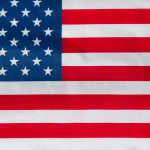Overview
The U.S. tariffs have already complicated the U.S.-Canada relations. Acting essentially as a tax on goods imported from Canada, the U.S. tariffs may have an adverse impact on Canadian businesses and employment numbers.
In this article, we’ll review the mechanism of the tariffs, the impacts on various aspects of the Canadian economy, tips to deal with the crisis, and how personal loans may help.
How Do Tariffs Work?
The U.S. tariffs are essentially a tax on imports. To offset the higher cost of doing business in a given country, the affected company will pass on the cost to the consumers i.e. increase the prices of the goods. This may result, in the long run, in a higher cost of living for average citizens.
While intended to boost demand for domestically produced goods, the U.S. tariffs inevitably introduce tension into trade relations. Reciprocal tariffs may then be introduced, complicating affordability for both parties involved. As businesses struggle with the increased costs and lower demand, a recession may become more likely.
Important Caveat
Canada is not the only country affected by U.S. tariffs. To begin with, U.S. president Donald Trump imposed a universal 10% tariff on all imports from all countries (source: the Greenberg Traurig law firm). Additional tariffs affect Canada, Mexico, China, the European Union and the U.K., Japan, South Korea, and Brazil.
A long list of additional countries to be affected by additional tariffs has been announced, including Myanmar, Laos, Thailand, South Africa, Bangladesh, Kazakhstan, Indonesia, Tunisia, Malaysia, Serbia, Cambodia, and Bosnia and Herzegovina.
This means Canada is far from alone in dealing with high U.S. tariffs. The U.S. is imposing tariffs on all the world’s countries, to one extent or another.
In the next section, we’ll look at three powerful impacts of the U.S. tariffs on the Canadian consumer.
3 Powerful Impacts of the U.S. Tariffs on Canada
The Employment Market
The U.S. tariffs may negatively impact the Canadian job market and employment opportunities. As Canadian businesses experience dwindling bottom lines, they may be forced to carry out mass layoffs. In addition, fewer job opportunities may be created. As people are already earning low to modest incomes and seeking new opportunities, the overall picture of employment may become even more grim.
The Cost of Living
As Canada and the U.S. trade blows, the cost of living is likely to increase on both sides of the border. Average Canadians and Americans may end up paying higher prices for nearly everything. As the COVID-19 pandemic previously exacerbated inflation and cost-of-living issues, the U.S. tariffs may pour generous fuel on the fire of unaffordability.
Investing
Investors may feel discouraged from investing in Canadian businesses that export products to the U.S., due to dwindling bottom lines. This may prevent new business development, slow economic growth, limit the creation of jobs, and even help send Canada into a recession.
In the next section, we’ll review five tips to deal with the impact of the U.S. tariffs on the Canadian economy.
5 Tips to Deal with the Tariffs
Here are five brilliant tips you may or may not have considered:
- Buy local. Canadian products may be more affordable compared to U.S. products as they are not singled out by the Canadian government for tariffs.
- Lower variable expenses. You may direct the money saved toward other, more urgent needs.
- Increase income. You may earn an online certification, take online courses, and/or attend an online bootcamp to qualify for a higher-paying job e.g. UX design, software development, graphic design, cybersecurity, and more.
- Buy in bulk. Bulk-buying products before they increase in price may help mitigate the expense.
- Build a budget and stick to it. Review your budget every single month and see what adjustments can be made.
In the next section, we’ll take a quick look at personal loans and how they may help cover immediate expenses in this uncertain economy.
How Can Personal Loans Help?
Personal loans may provide quick funds to subprime and near-prime borrowers, whose credit scores may fall below 660. Featuring a quick and easy online application process, personal loans are repaid over predictable installments, including applicable interest and fees, and are designed to help cover urgent expenses.
Final Thoughts
The U.S.-Canada trade war is just one facet of a global trade war between the U.S. and all other countries. Affordability may become more and more of a distant dream due to the ongoing economic crises. Therefore, it’s understandable why individuals may need help covering immediate expenses. If you need fast funds, simply apply for a personal loan via LendProConnect. We don’t check credit scores or credit reports during the quick online application process. Funds may be e-transferred to your bank account in as little as 24 hours!










